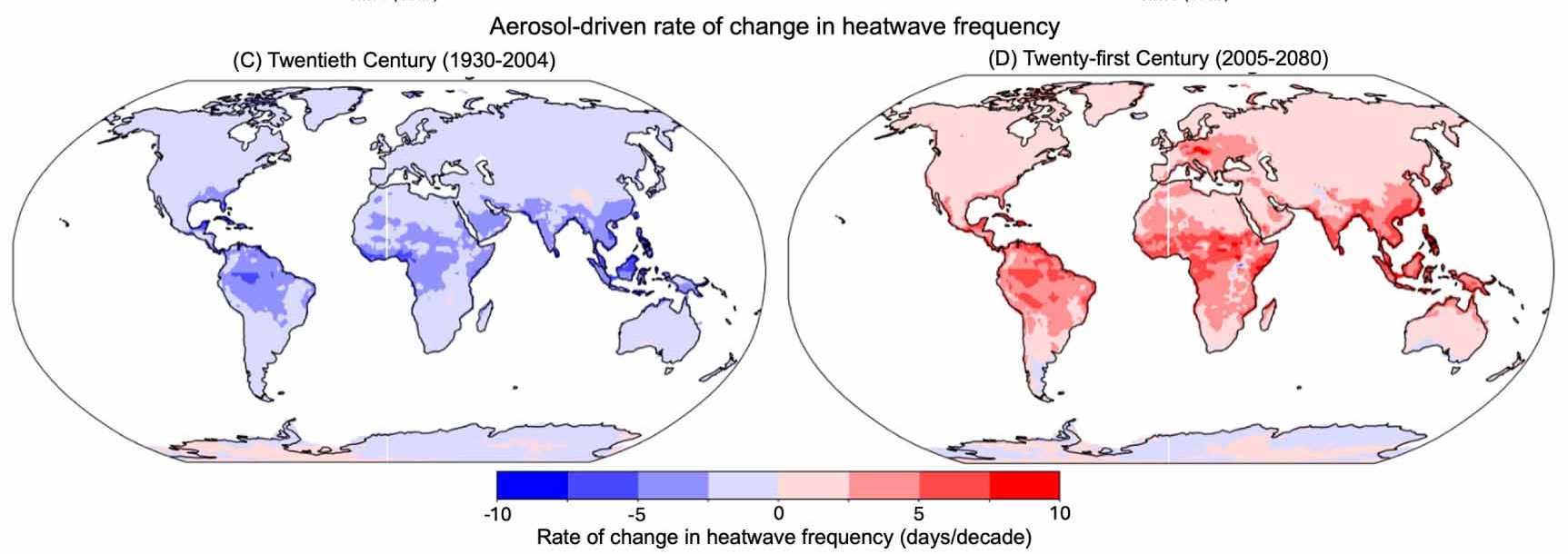A new study suggests that the decline in air pollution, specifically aerosols, could significantly increase the frequency of heatwaves, particularly in urban areas.
Led by researchers at The University of Texas at Austin, the study is the first to focus on how aerosol levels influence people’s direct exposure to heatwaves.

Aerosols (which include substances such as dust, soot, sea salt, pollen, sulfates and nitrates) reflect sunlight back into space in a process known as radiative forcing, which can temporarily lower local temperatures. Some also help clouds form, which can further affect how much solar radiation reaches the Earth’s surface.
The inevitable consequence of efforts to improve air quality is the reduction of that cooling effect.
The research team used global climate models to show that aerosols can be up to 2.5 times more influential than greenhouse gases in shaping regional heatwave patterns. In areas where aerosol emissions have historically been high, such as cities, this effect has been particularly strong. From 1920 to the present, aerosols are estimated to have suppressed heatwave events in populated areas by roughly 50%. But as aerosol levels drop, this protective effect is diminishing.
One concern raised by the study is that the effects of declining aerosols are felt quickly and locally. Unlike greenhouse gases, which remain in the atmosphere for decades or centuries and are globally distributed, aerosols linger for only a few weeks and tend to affect the regions where they are emitted. This makes urban areas especially vulnerable to rising temperatures as emissions fall.
Study co-author Cameron Cummins said: ‘We knew that aerosol emissions were suppressing global warming at the regional level, but the impact of that same suppression on heatwaves near urban centers was much greater than we expected. So, as cities seek to curb their aerosol emissions to improve public health, they will also likely experience more heatwaves.’
Regions like Sub-Saharan Africa, South Asia, South America, and Western Europe are likely to see the greatest increases in heatwave frequency. In fact, parts of Western Europe, once shielded from extreme heat by high aerosol levels, could see heatwaves increase by as many as 40 days a year by 2050. Globally, average heatwave days could nearly triple from about 40 to 110 per year by 2080 if aerosol emissions continue to decline.
Geeta Persad, an assistant professor at the UT Jackson School of Geosciences said: ‘Aerosols are really good at counteracting exposure [to heatwaves] right now, but that could rapidly change in the future. We seem to have already crossed a tipping point where declining aerosols are accelerating heatwave exposure in a lot of places.’
Despite their cooling effect, the team point out that aerosols are not a solution to climate change, given the health risks they pose. Instead, they suggest, these findings should serve as a warning: as we reduce pollution to protect human health, cities must prepare for an increase in extreme heat.
Persad adds: ‘This work suggests that what happens with aerosols in the near future is going to be really important for what happens with heat wave hazard and exposure and risk in the near future, the next 20 to 30 years.’
The full research can be read here.

















Leave a Reply